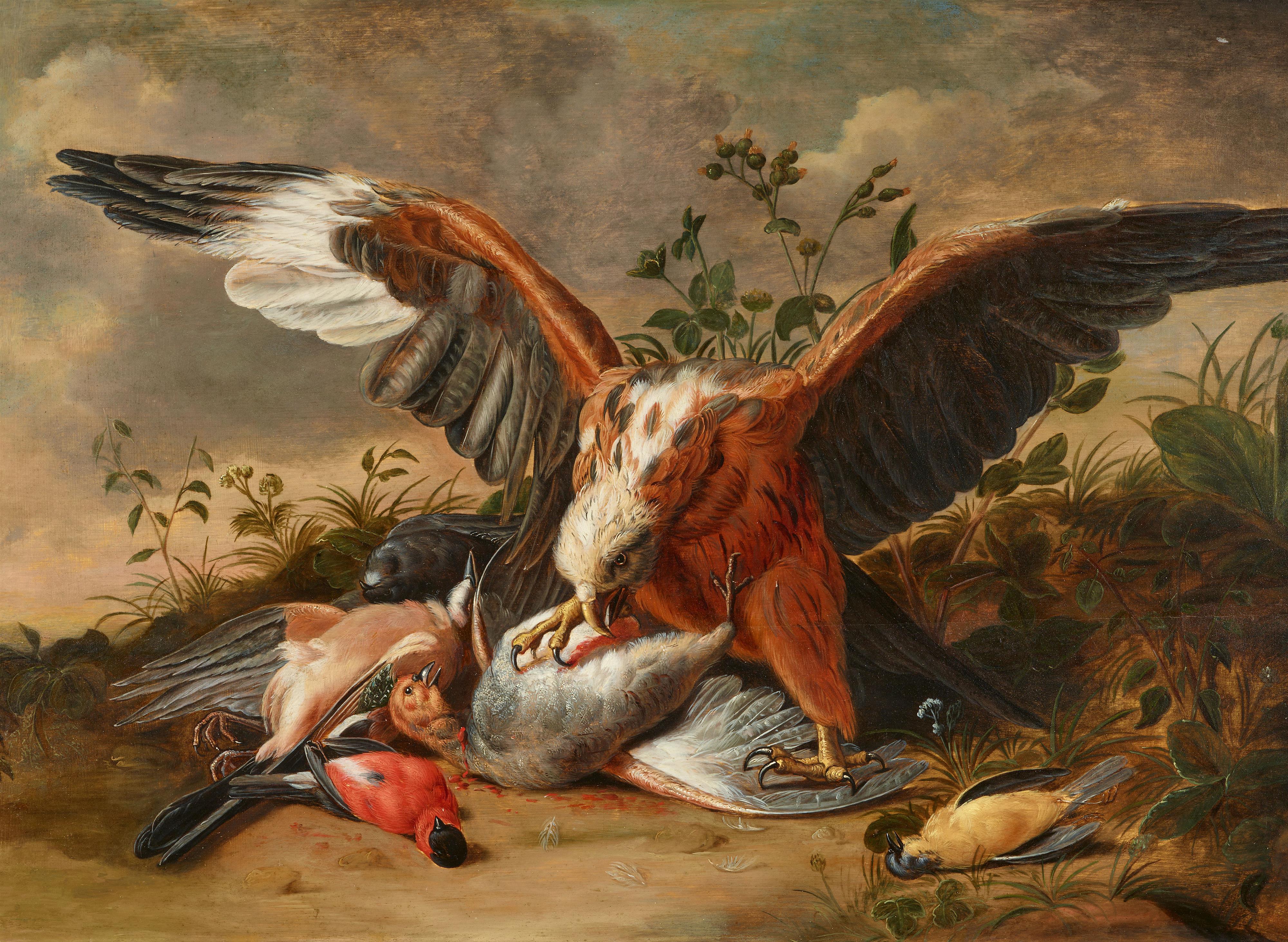Vermoelen Jacob Xavier
A hawk with his quarry: a Flemish jay, a male and a female bullfinch, and a grey partridge in a landscape with thistles and other wildflowers
Oil on panel (parquetted). 62.5 x 88 cm.
This evocative depiction of a bird of prey striking its prey was long thought to be the work of the Antwerp still-life painter Peeter Boel (1622-1674). It is startling for the directness of the narrative, the harmonious palette and the incisive use of colour, stylistic elements more reminiscent of the works of the great French animal painters of the eighteenth century, such as Oudry (1686-1755) or Desportes (1661-1743). The carefully executed oak panel, which is characteristic of Flemish and especially Antwerp production in the seventeenth century, speaks against a later dating. Pieter Boel was in Paris as of 1668, and the French influence on his late work would fit in this context.
Prof. Jan de Maere has more recently suggested an attribution to the rare animal painter Jacob Xaverus Vermoelen. Like Peeter Boel, Vermoelen was a representative of the great tradition of Antwerp still life painting that goes back to Frans Snyders. His teacher was Pieter Snyers. In 1733 he became a master in the Antwerp Saint Luke's Guild. Like Boel, he travelled abroad and settled in Rome in 1748. This painting could be an early work by the artist from his Antwerp period. Jan de Maere points out the similarity to paintings in the Museum of Fine Arts in Ghent and the Brukenthal Museum in Sibiu.
Provenance
Baron Robert Gendebien (1885-1954), Brussels, and by descent until acquired by the present
owner, private collection, Antwerp, as Peeter Boel.

